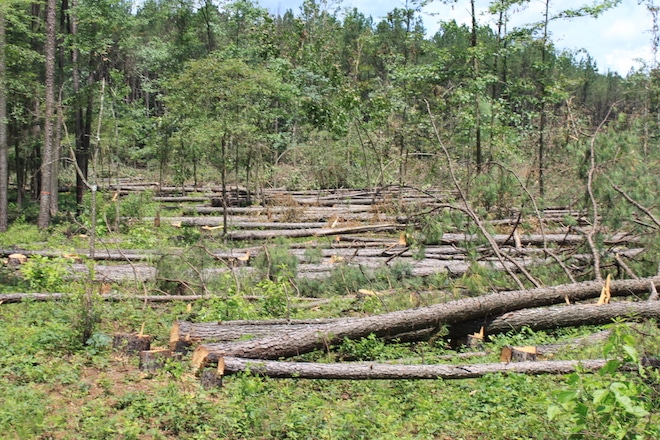In 2016, the state’s forestry industry boasted a production value of $1.41 billion.
But now that treasured natural resource is in serious danger.
The southern pine beetle, an insect native to the U.S., is the most destructive forest pest in the south, both in economic and ecological impacts. In the absence of southern pine beetle suppression, large-scale pine mortality occurs, destroying endangered species habitat, recreation opportunities, timber, and other property values.
Recent surveys found more than 3,500 spots of infestation by southern pine beetles on the Homochitto Ranger District (southwest Mississippi), Bienville Ranger District (central Mississippi), Tombigbee Ranger District and the Holly Springs Ranger District (both in north Mississippi).
“We have put together a dedicated team of professionals to manage our beetle suppression and
resource protection efforts as an incident. This approach provides an increased focus and additional resources as we work to protect resources on public and private forest lands,” said National Forests in Mississippi Forest Supervisor Gretta Boley. “We are working very closely with our state partner, the Mississippi Forestry Commission.”
Staff from the National Forests in Mississippi and the Mississippi Forestry Commission are working closely with the incident management team. “We are working with and reaching out to private landowners who have questions or need assistance related to the southern pine beetle outbreaks,” said Mississippi State Forester Charlie Morgan. “We continue to work with and support our federal partner, the National Forests in Mississippi, in responding to the southern pine beetle outbreaks.”
“Our crews are working very hard in some extreme conditions including rough terrain and excessive heat,” Boley added. “They are doing an excellent job. Carrying out our work safely is of the utmost importance.”

Forest workers are cutting infested trees to suppress the spread of the beetles and protect resources. Cutting trees helps prevent spot growth by disrupting the beetle pheromone communication system and thus their ability to effectively aggregate and mass attack new pine trees. It is generally thought that most southern pine beetles die before they can colonize trees in a new spot, particularly in the summer when survival outside of the tree is short.

Foresters generally use one of two suppression methods: cut and remove or cut and leave. Cut and remove is the preferred and most effective suppression tactic because it eliminates all the beetle and their pheromone odors from the forest. Because of the markets and weather, cut and remove has not been available as an option. While less effective, cut and leave – a method that leaves the cut tree in the forest – is the primary suppression tactic at this time.
Click here for more information.




